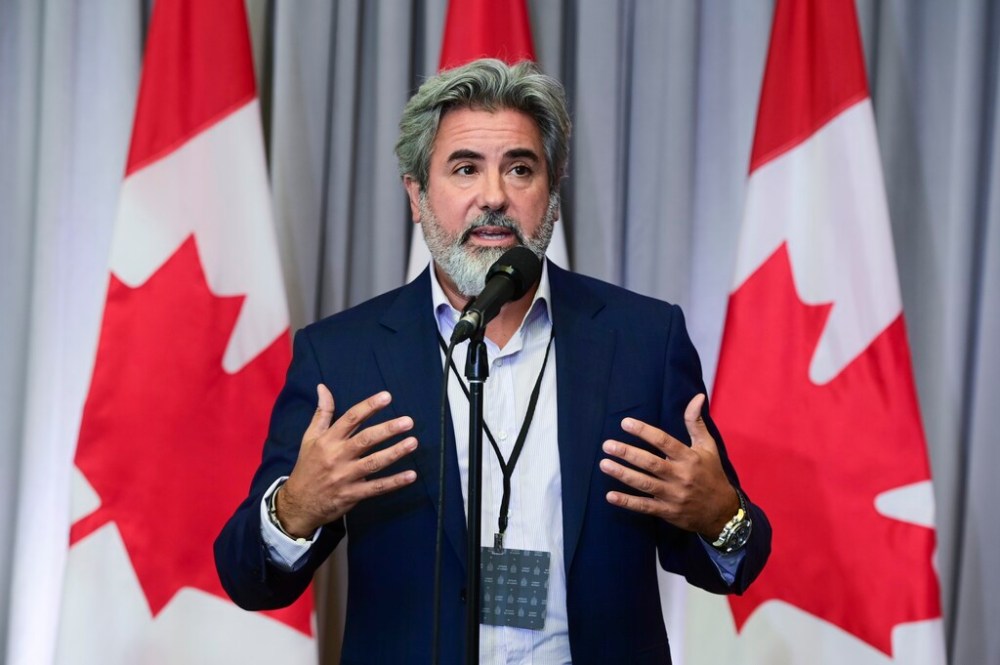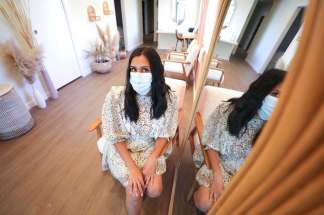Cabinet must limit COVID-19 damage
Read this article for free:
or
Already have an account? Log in here »
To continue reading, please subscribe:
Monthly Digital Subscription
$0 for the first 4 weeks*
- Enjoy unlimited reading on winnipegfreepress.com
- Read the E-Edition, our digital replica newspaper
- Access News Break, our award-winning app
- Play interactive puzzles
*No charge for 4 weeks then price increases to the regular rate of $19.00 plus GST every four weeks. Offer available to new and qualified returning subscribers only. Cancel any time.
Monthly Digital Subscription
$4.75/week*
- Enjoy unlimited reading on winnipegfreepress.com
- Read the E-Edition, our digital replica newspaper
- Access News Break, our award-winning app
- Play interactive puzzles
*Billed as $19 plus GST every four weeks. Cancel any time.
To continue reading, please subscribe:
Add Free Press access to your Brandon Sun subscription for only an additional
$1 for the first 4 weeks*
*Your next subscription payment will increase by $1.00 and you will be charged $16.99 plus GST for four weeks. After four weeks, your payment will increase to $23.99 plus GST every four weeks.
Read unlimited articles for free today:
or
Already have an account? Log in here »
Hey there, time traveller!
This article was published 14/09/2020 (1916 days ago), so information in it may no longer be current.
Prime Minister Trudeau and his ministers, gathering face-to-face for the first time since the pandemic struck Canada, were struggling on Monday to decide whether the government has to conquer COVID-19 first or start now on shaping the post-COVID era. It was a great question to wrestle with because there probably is no meaningful answer.
Spread of the disease has been slowly accelerating in Canada, creeping toward or above 500 new cases a day nation-wide. This is a modest rate of spread compared to the United States and hard-hit countries in Europe, but it shows that Canada’s people and their governments, in aggregate, are losing ground and not bringing the epidemic to an end.
The experience of Australia and New Zealand suggests that Canada is not going to stamp this disease out soon. Australia seemed to be managing it well until an outbreak in Melbourne provoked a total lock-down across the state of Victoria in early July, which is only now being gradually relaxed. New Zealand appeared to have halted community transmission until an outbreak was seen in Auckland in early September. Even in those remote and isolated locations, the pandemic isn’t over until it’s over, and it’s a long way from being over.

Even after a vaccine is developed, there is no assurance that it will provide total immunity. We already know that the influenza vaccine has to be re-invented every year because last year’s vaccine does not stop this year’s virus and because a minority of people refuse vaccination.
The challenge for Canada therefore is not to conquer the virus and then move on but rather to find sustainable ways of keeping the damage to a minimum. The work of living our Canadian lives has to be carried on amid the continuing presence of the virus and the continued danger of outbreaks.
Families and businesses are already re-shaping themselves around these new realities. Abandoned restaurants that once flourished in the pre-pandemic economy are re-opening as food stores or suppliers of personal protective equipment. Downtown offices are re-calculating how many of their people should come to work and how many should work from home.
Canadians are learning to live their lives in the time of COVID-19. Some of the new patterns may still apply a few years from now, others probably will not. Families and businesses have to respond to the conditions they actually face, not to hopes or fears for the future. The government needs to do the same.
Among the 36 ministers who make up Mr. Trudeau’s government, there must surely be enough leadership skill to achieve two things at once – provide ordinary government services to the people and limit the damage inflicted by COVID-19.

The whole-of-government approach which has been popular in Ottawa in recent years dictates that everybody in the capital must think about one thing – until they are ordered to forget that and think about the next thing. At its worst, this system can lead to absurd struggles over whose pet project should pre-occupy the whole of government.
The Throne Speech the government is preparing should set reasonable expectations for curbing the spread of COVID-19. It should reflect the needs that were brought into focus by the disease – needs for reform of long-term nursing care, for expansion of child care, for health and safety of temporary foreign workers. It should chart a path to lower greenhouse gas emissions. It should reassure Canadians that the virus has not paralysed their government.






